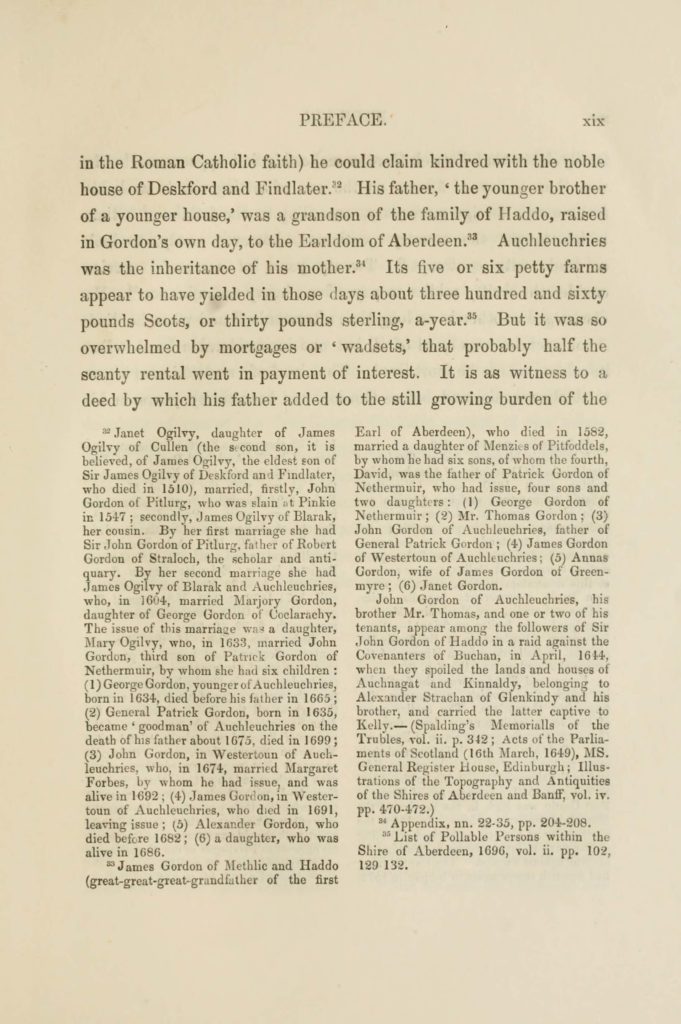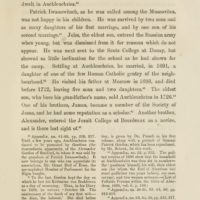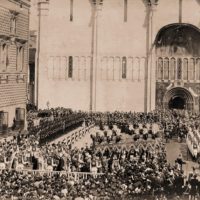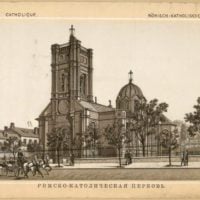
Related

PREFACE. xxi grave, his grandson was a landless man, and another race of Gordons dwelt in Auchleuchries

XXIV PREFACE. at Auchintoul in 1752, in his eighty-second year, having amused

Coronation in Uspenskiy Cathedral. Emperor Nicholas II and Empress Alexandra Feodorovna, 1896

Roman Catholic Church, Odessa, 1900-1914

Tsar Nicholas II and his family at a cathedral

Herolds on a Coronation of Emperor Nicholas II and Empress Alexandra Feodorovna, 1896
![1694] DIARY OF PATRICK GORDON. 183 of all deadly ; consenting thir presents to be rcgistrate in the books of Counsell and Session](https://cdn2.picryl.com/thumbnail/1699/12/31/1694-diary-of-patrick-gordon-183-of-all-deadly-consenting-thir-presents-to-af29e6-200.jpeg)
1694] DIARY OF PATRICK GORDON. 183 of all deadly ; consenting thir presents to be rcgistrate in the books of Counsell and Session

House of Nolli. Odessa, 1900-1914

Father John. Archpriest and Key-keeper of the St. Andrew's Cathedral in Kronstadt. 1891
PREFACE. XIX in the Roman Catholic faith) he could claim kindred with the noble house of Deskford and Findlater
Summary
Passages from the diary of General Patrick Gordon of Auchleuchries : A.D. 1635-A.D. 1699"
PREFACE.
XIX
in the Roman Catholic faith) he could claim kindred with the noble
house of Deskford and Findlater/*^ His father, ' the younger brother
of a younger house,* was a grandson of the family of Haddo, raised
in Gordon's own day, to the Earldom of Aberdeen.^^ Auchleuchries
was the inheritance of his mother.^' Its five or six petty farms
appear to have yielded in those <]ays about three hundred and sixty
pounds Scots, or thirty pounds sterling, a-year.^^ But it was so
overwhelmed by mortgages or ' wadsets,' that probably half the
scanty rental went in payment of interest. It is as witness to a
deed by which his father added to the still growing burden of the
*-' Janet Ogilvy, daughter of James
Ogilvy of Cullen (the second son, it is
believed, of James Ogilvy, the eldest son of
Sir James Ogilvy of Deskford and Findlater,
who died in 1510), married, firstly, John
Gordon of Pitlurg, who was slain ;it Pinkie
in 1547 ; secondly, James Ogilvy of Blarak,
her cousin. By her first marriage she had
Sir John Gordon of Pitlurg, father of Robert
Gordon of Straloch, the scholar and anti-
quary. By her second marriage she had
James Ogilvy of Blarak and Auchleuchries,
who, in 1604, married Marjory Gordon,
daughter of George Gordon of Coclarachy.
The issue of this marriage was a daughter,
Mary Ogilvy, wno, in 1633, married John
Gordon, third son of Patrick Gordon of
Nethermuir, by whom she had six children :
( 1) George Gordon, younger of Auchleuchries,
born in 1634, died before his father in 1665 ;
(2) General Patrick Gordon, born in 1635,
became ' goodman' of Auchleuchries on the
death of his father about 1675, died in 1699 ;
(3) John Gordon, in Westcrtoun of Auch-
leuchries, who, in 1674, married Margaret
Forbes, by whom he had issue, and was
alive in 1692 ; (4) James Gon'on, in Westcr-
toun of Auchleuchries, who died in 1691,
leaving issue ; (5) Alexander Gordon, who
died before 1682; (6) a daughter, who was
alive in 1686.
^ James Gordon of ]\Iethlic and Haddo
(great-great-great- grandfather of the first
Earl of Aberdeen), who died in 1582,
married a daughter of Menzits of Pitfoddels,
by whom he had six sons, of whom the fourth,
David, was the father of Patrick Gordon of
Nethermuir, who had issue, four sons and
two daugiittrs: (1) George Gordon of
Nethermuir ; (2) Mr. Thomas Gordon ; (3)
John Gordon of Auchleuchries, father of
General Patrick Gordon ; (4) James Gordon
of Westertoun of Auchleuchries; {5) Annas
Gordon, wife of James Gordon of Green-
myre ; (6) Janet Gordon.
John Gordon of Auchleuchries, his
brother Mr. Thomas, and one or two of his
tenants, appear among the followers of Sir
John Gordon of Haddo in a raid against the
Covenanters of Buchan, in April, 1644,
when they spoiled the lands and houses of
Auchnagat and Kinnaldy, belonging to
Alexander Strachan of Glenkindy and his
brother, and carried the latter captive to
Kelly. — (Spalding's Mcmorialls of the
Trubles, vol. ii. p. 342; Acts of the Parlia-
ments of Scotland (I6th March, 1649), MS.
General Register House, Edinburgh ; Illus-
trations of the Topography and Antiquities
of the Shires of Aberdeen and Banff, vol. iv.
pp. 470-472.)
*» Appendix, nn. 22-35, pp. 204-208.
^^List of PoUable Persons within the
Shire of Aberdeen, 1696, vol. ii. pp. 102,
129 132.
Gordon was brought up and remained a lifelong Roman Catholic, at a time when the Church was being persecuted in Scotland. At age of fifteen, he entered the Jesuit college at Braunsberg, East Prussia, then part of Poland. In 1661, after many years experiences as a soldier of fortune, he joined the Russian army under Tsar Aleksei I, and in 1665 was sent on a special mission to England. After his return, he distinguished himself in several wars against the Turks and Tatars in southern Russia. In recognition of his service he was promoted to major-general in 1678, was appointed to the high command at Kiev in 1679, and in 1683 was made lieutenant-general. In 1687 and 1689 he took part in expeditions against the Tatars in the Crimea, being made a full general. Later in 1689, a revolution broke out in Moscow, and with the troops under his command, Gordon virtually decided events in favor of Peter the Great against the Regent, Tsarevna Sophia Alekseyevna. Consequently, he was for the remainder of his life in high favor with the Tsar, who confided to him the command of his capital during his absence from Russia. In 1696, Gordon's design of a "moveable rampart" played a key role in helping the Russians take Azov. One of Gordon's convinced the Tsars to establish the first Roman Catholic church and school in Muscovy, of which he remained the main benefactor and headed the Catholic community in Russia until his death. For his services his second son James, brigadier of the Russian army, was created Count of the Holy Roman Empire in 1701. At the end of his life the Tsar, who had visited Gordon frequently during his illness, was with him when he died, and with his own hands closed his eyes. General Gordon left behind him a uniquely detailed diary of his life and times, written in English. This is preserved in manuscript in the Russian State Military Archive in Moscow. Passages from the Diary of General Patrick Gordon of Auchleuchries (1635–1699) was printed, under the editorship of Joseph Robertson, for the Spalding Club, at Aberdeen, Scotland, 1859.
